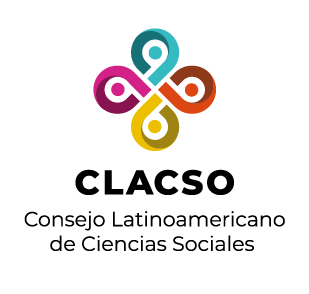Red de Bibliotecas Virtuales de Ciencias Sociales en
América Latina y el Caribe

Por favor, use este identificador para citar o enlazar este ítem:
https://biblioteca-repositorio.clacso.edu.ar/handle/CLACSO/82851Registro completo de metadatos
| Campo DC | Valor | Lengua/Idioma |
|---|---|---|
| dc.creator | Liliana Meza González | - |
| dc.creator | Ana Belén Mora Yague | - |
| dc.date | 2005 | - |
| dc.date.accessioned | 2022-03-22T16:07:34Z | - |
| dc.date.available | 2022-03-22T16:07:34Z | - |
| dc.identifier | http://www.redalyc.org/articulo.oa?id=32314201 | - |
| dc.identifier.uri | http://biblioteca-repositorio.clacso.edu.ar/handle/CLACSO/82851 | - |
| dc.description | Using the National Survey on Employment, Wages, Technology and Training (Enestyc), this paper tries to find the relationship between increasing trade and the proportion of total income Mexican manufacturing firms invest on R&D. Based on two cross-sectional and a panel estimation procedures, the results confirm the idea that increasing the exposure to foreign markets affect the innovative efforts of Mexican firms. We also find that the firms engaging in some kind of R&D do not conform a random sample. More specifically, our results show that, in 1992, the probability of finding a firm engaging resources in some kind of R&D increased with size, a market diversification measure, and a measure of industrial market power at a 2-digit level, while the intensity of the R&D effort depended, on market power and an industry concentration measure. For the 1999 estimation our results show that the probability of R&D investment at a firm level increased with size, a market diversification measure, and exposure to foreign competition, while the magnitude of the R&D effort of a firm was determined by the decrease in average import tariffs at the industry level and by the exporting efforts of the firm. We find strong complementarities between public and private innovation efforts in both years, but find that younger firms are doing stronger R&D efforts in 1999. The 1992- 99 balanced panel results show that exporting firms invest more in R&D while import competing firms invest less, once size, market power and other control variables are taken into account. Our estimation indicates that exporting give firms a great incentive to innovate, and that not only large, but also small firms contribute to the R&D efforts of a nation. | - |
| dc.format | application/pdf | - |
| dc.language | en | - |
| dc.publisher | Centro de Investigación y Docencia Económicas, A.C. | - |
| dc.relation | http://www.redalyc.org/revista.oa?id=323 | - |
| dc.rights | Economía Mexicana. Nueva Época | - |
| dc.source | Economía Mexicana. Nueva Época (México) Num.2 Vol.XIV | - |
| dc.subject | Economía y Finanzas | - |
| dc.subject | R&D | - |
| dc.subject | trade liberalization | - |
| dc.subject | foreign direct investment | - |
| dc.subject | exposure to foreing markets | - |
| dc.title | Trade and Private R&D in México | - |
| dc.type | artículo científico | - |
| Aparece en las colecciones: | Centro de Investigación y Docencia Económicas A.C. - CIDE - Cosecha | |
Ficheros en este ítem:
No hay ficheros asociados a este ítem.
Los ítems de DSpace están protegidos por copyright, con todos los derechos reservados, a menos que se indique lo contrario.